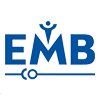


On October 29, 2009, Joseph L. Long, Esq., P.E. spoke on "Intellectual Property for Scientists and Biomedical Engineers" He gave an overview of intellectual property issues of relevance to engineers, scientists, and managers. He began with a brief comparison of the different types of intellectual property including patents, copyrights, trademarks, and trade secrets. The remainder of the presentation focused predominantly on patents including the types of patents available, patentable subject matter, inventorship, and patent ownership. He continued with a discussion of patentability, the parts of a U.S. patent application, and a typical timeline and process for obtaining a patent in the United States.
Joseph Long (IEEE Senior Member) is a Patent Attorney with well over a decade of engineering experience. Joe is also licensed as a Professional Engineer by the State of Georgia, and is registered to practice before the United States Patent and Trademark Office. The IEEE EMB Society is grateful to Mr. Long for giving this presentation.
On August 25, 2009, Rafael V. Andino, President and CEO Biofisica, spoke on "Creating a New Venture in the Medical Device Industry". The talk discussed considerations that should be reviewed in the creation of a new medical device company. Topics included product development, market selection, development of a team, sales and marketing, manufacturing, and finance. The presentation aimed to give the audience an appreciation of the process and the general requirements necessary to build a successful medical device company from the ground up.
Mr. Andino founded Biofisica, Inc. in 1999 with the vision of developing breakthrough products to expedite wound healing and regeneration of connective tissue in humans. In late 2006, Mr. Andino and his management team launched the first wound care product of its kind, POSiFECT®, in the United Kingdom. The IEEE EMB Society is grateful to Mr. Andino for giving this presentation.
On January 13, 2009, Dr. Zhong Lin (Z.L.) Wang, Regents Professor at the School of Materials Science and Engineering, Georgia Institute of Technology, spoke on "Nanotechnology for energy harvesting: from nanogenerators to nanopiezotronics". Energy and technologies are desperately needed for independent and continuous operations of implantable biosensors, ultrasensitive chemical and biomolecular sensors, nanorobotics, micro-electromechanical systems, remote and mobile environmental sensors, homeland security and even portable personal electronics. A nanorobot, for example, is proposed to be a smart machine that may be able to sense and adapt to the environment, manipulate objects, taking actions and perform complex functions. A key challenge is to find a power source that can drive the nanorobot without adding much weight. An implanted wireless biosensor requires a power source, which may be provided directly or indirectly by charging of a battery. It is highly desired for wireless devices and even required for implanted biomedical devices to be self-powered without using battery. This talk focused on nanotechnologies that have been developed for harvesting energy from our living environment with a focus on mechanical energy. An introduction was given about nanogenerators for generating electricity using sonic waves and body movements. Finally, a new field on nano-piezotronics was introduced, which uses piezoelectric-semiconducting coupled property for fabricating novel and unique electronic devices and components.
Dr. Zhong Lin (ZL) Wang has authored and co-authored four scientific reference and textbooks and over 540 peer reviewed journal articles, 55 review papers and book chapters, edited and co-edited 14 volumes of books on nanotechnology, and holds 20 patents and provisional patents. Dr. Wang was in the world's top 25 most cited authors in nanotechnology from 1992-2002 (ISI, Science Watch). His entire publications have been cited over 23,000 times. The H-index of his citations is 73.
Dr. Wang discovered the nanobelt in 2001, which is considered to be a ground-breaking work. The paper on nanobelt was the second most cited paper in chemistry in 2001-2003 world-wide. His paper on piezoelectric nanosprings was one of the most cited papers in materials science in 2004 world-wide. His recent invention of world's first nanogenerator will have profound impacts to implantable biosensors and molecular machines/robotics. In 1999, he and his colleagues discovered the world's smallest balance, nanobalance, which was selected as the breakthrough in nanotechnology by the America Physical Society. He was elected to a fellow of American Physical Society in 2005, fellow of AAAS in 2006, has received the 2001 S.T. Li prize for Outstanding Contribution in Nanoscience and Nanotechnology, the 2000 and 2005 Georgia Tech Outstanding Faculty Research Author Awards, Sigma Xi 2005 sustain research awards, Sigma Xi 1998 and 2002 best paper awards, and the 1999 Burton Medal from Microscopy Society of America. Details can be found at: https://www.nanoscience.gatech.edu/zlwang.
The IEEE EMB Society is grateful to Dr. Wang for giving this presentation.
Last updated April 6, 2022.
Webmaster: asdurey (at) ieee.org
